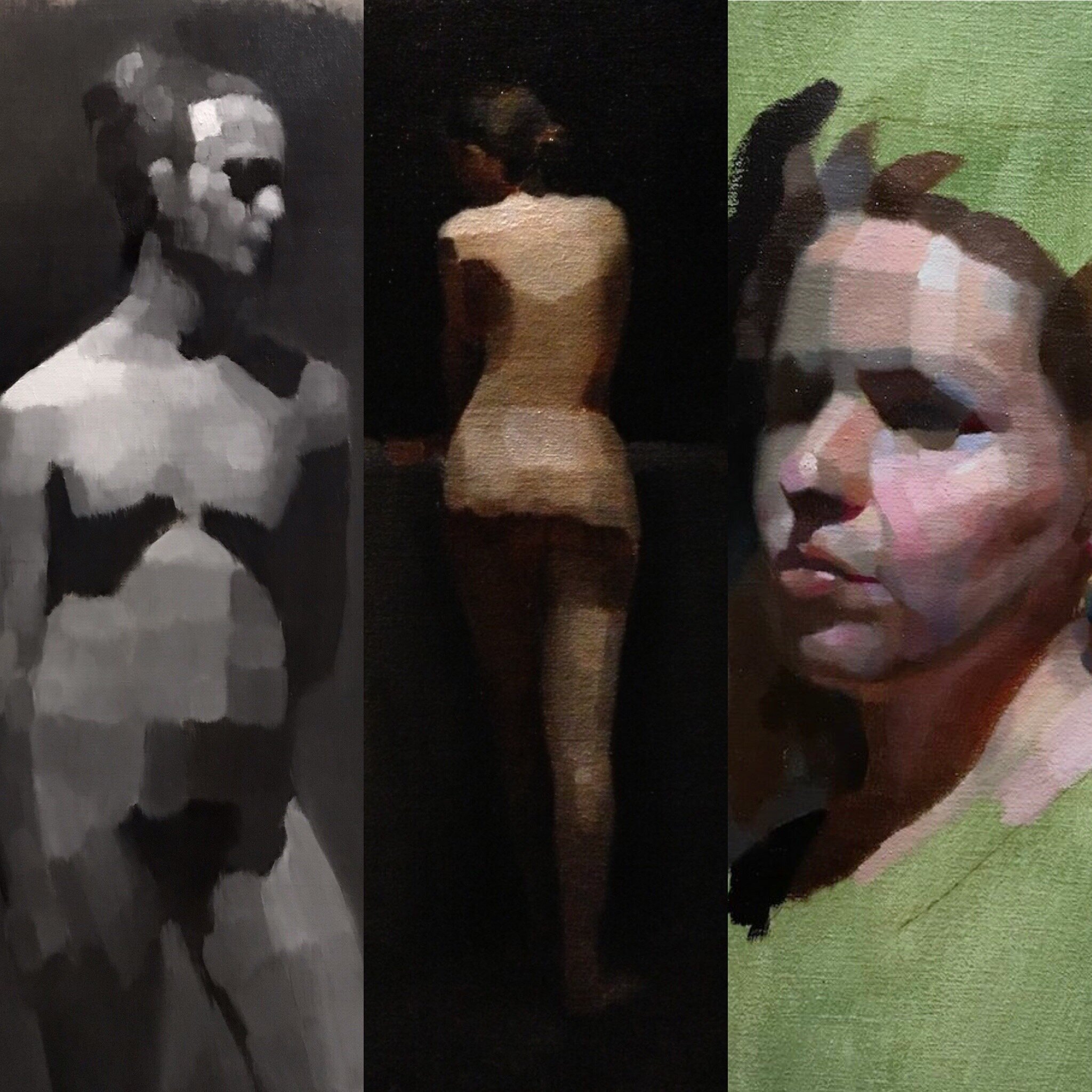Workshops & Courses
Portrait Painting:
Sight-Size Tradition
10 Day Workshop
"It is also advisable to go some distance away, because then the work appears smaller, and more of it is taken in at a glance, and lack of harmony and proportion in the various parts and in the colours of the objects is more readily seen.” -Leonardo da Vinci
The goal of this 10 day workshop is to paint a realistic head and shoulders portrait with an emphasis on achieving volume and creating a dramatic light effect.
In the sight-size method, the canvas is placed next to the subject with the artist standing at a distance to the set-up. Rather than dwelling on detail, the artist takes in the whole to comprehend the larger visual effect, a critical element to producing a realistic piece that holds together from a far.
Students will begin with a simplified graphite drawing. Prior to transferring to the linen, a small color study will determine color mixtures and composition. Students will then proceed into an underpainting of raw umber with white and culminate with full color palette in oils.
I will lecture and demo on subjects including: facial anatomy, planar modeling, the indirect painting method, color temperature, edge quality, glazing and scumbling.
As is typical in a classical atelier setting, two students will paint from one model.
This workshop or a modified versions are available for travel. Please contact me with requests.
Color Study for the Figure
6 Day Workshop
The color study is a preliminary sketch that determines specific color mixtures and establishes, in the most simplified manner, the value range that will best achieve a light effect and create volume. An essential step of my painting process, this stage is subsequently used as an indispensable reference when completing a naturalistic painting.
This six day worksop will introduce the student to planar figure studies in three different palettes: grisaille, warm/cool and limited color. Lectures will cover materials, terminology and concepts. Demos will provide visual assistance.
At the end of this 6 day workshop, participants will take away a greater understanding of how to simplify visual information, properly compose values and create color harmony, including the mapping out of temperature patterns.
All levels welcome.
BFA Course
14 Weeks
Monet, Cezanne, Klimt, Picasso, O’Keeffe, Bearden, Pollock--one cannot group together a more diverse association of artists, and yet each of them trained classically before becoming impressionists, expressionists and abstractionists. To break the rules, it’s best to know the rules.
I have developed a semester long course to reintroduce the academic approach into the 4 year art school curriculum. For more information and syllabus, please contact me.
Course Description
This course will focus on a systematic approach to drawing the figure using classical techniques and tools. Through direct observation and conceptual analysis, the student will learn to best render the “reality” of nature.
Departmental Goals
Through this class students will learn to:
● Conceptually interpret visual information
● Accurately translate three dimensional form onto a two dimensional surface
● More confidently approach drawing the human figure
● Apply classical technique to a contemporary viewpoint
Course Learning Outcomes
Students will learn a systematic method that will improve their ability to analyze structure and:
● Convincingly capture proportion and gesture by way of linear “block-in”
● Better improve shape recognition through a graphic and abstracted light and dark pattern
● Create a broad fall of light by isolating planes and determining each one’s orientation and proximity to the light source
● Model three dimensional form through conceptual understanding
● Convincingly create a sense of light and texture through the manipulation of value organization
● Place smaller forms within the context of the larger forms by rendering detail and finessing transitions
Course Content
This course will develop six techniques and concepts, each of which will be presented over two weeks: First, an introduction through drawing from the flat and cast drawing; next, a further exploration working with the model.



